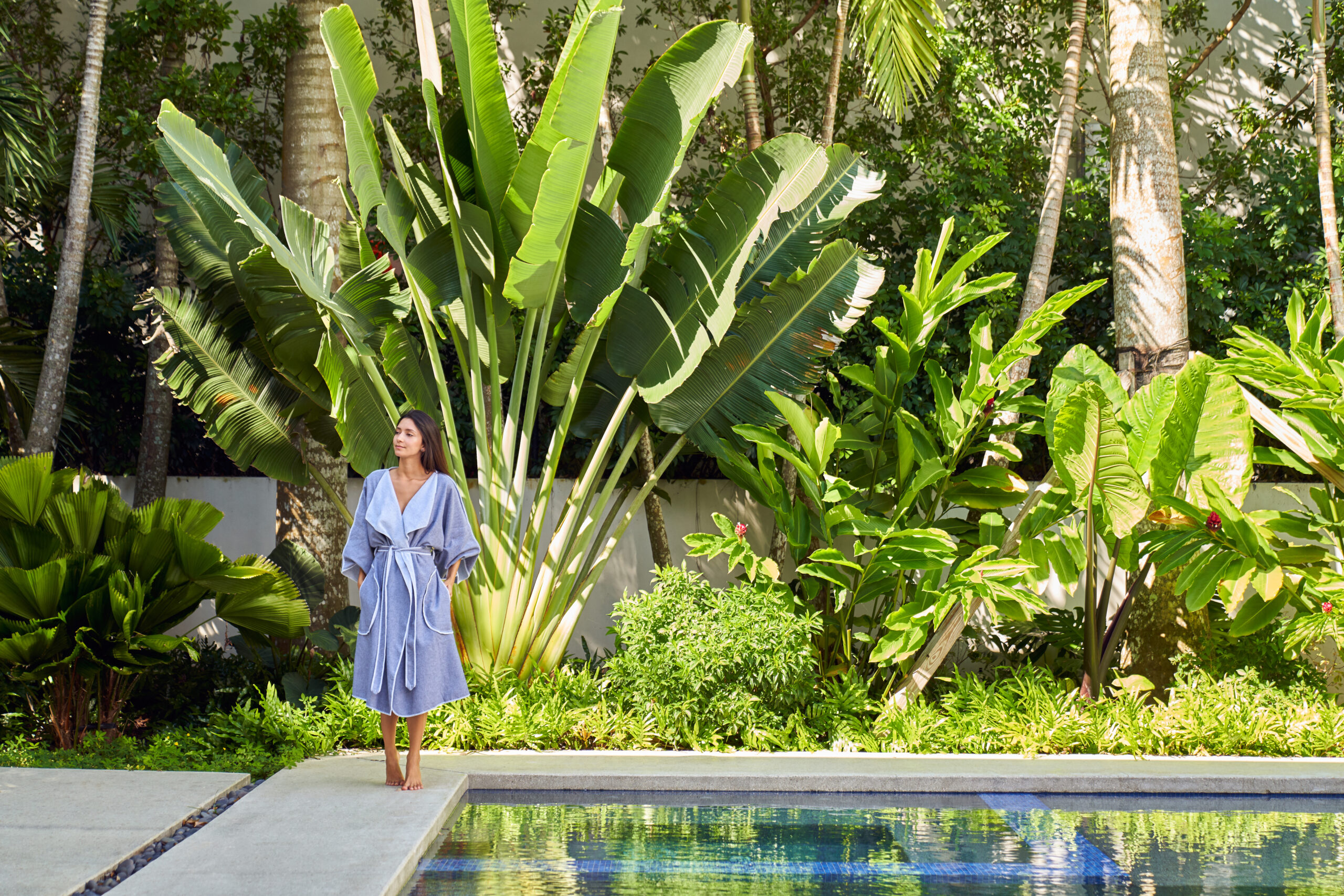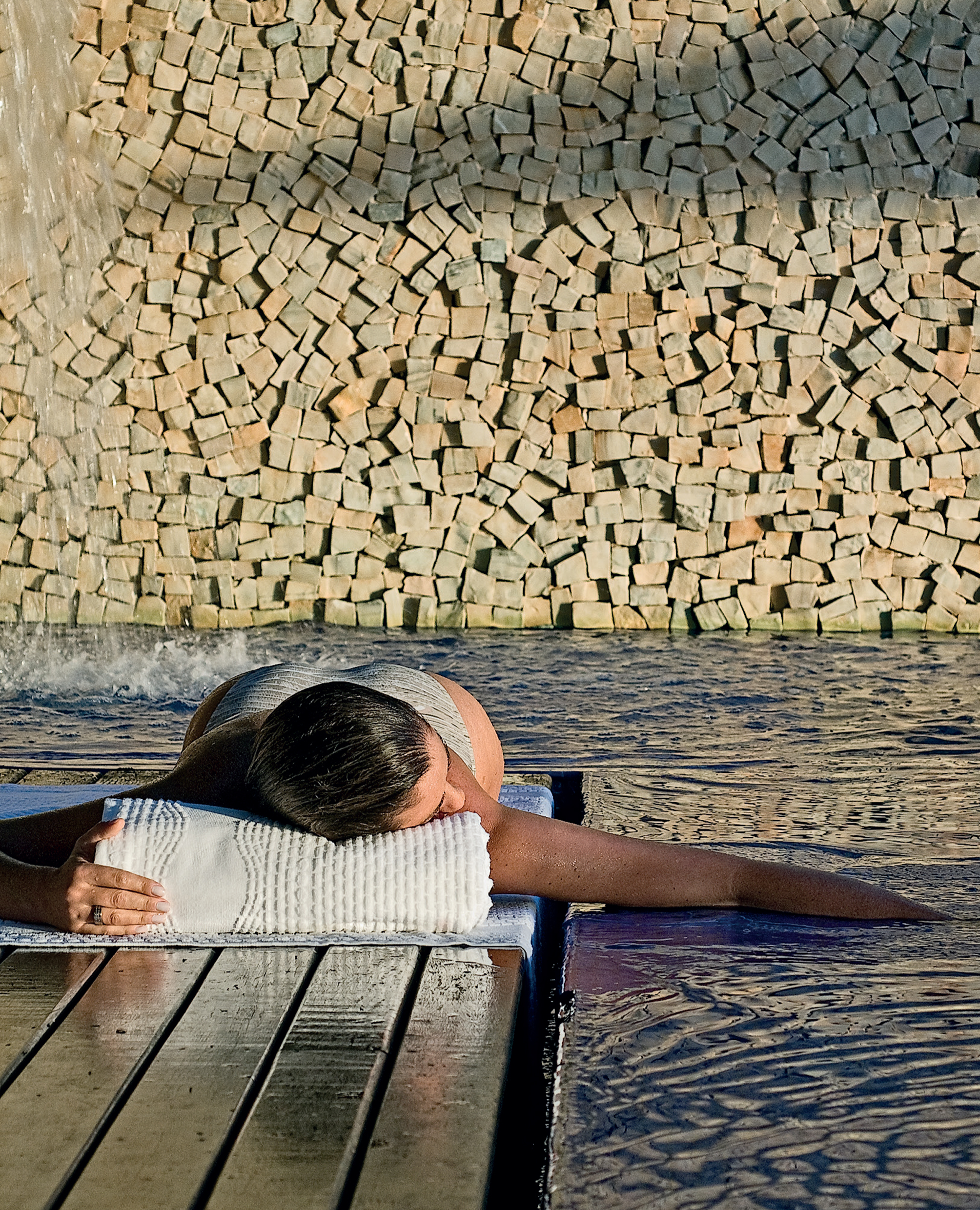As part of TLEE Spas ‘Brand Spotlight’ series, our Vice President, Michael Lahm, caught up with Charmaine Lang, owner and founder of The Madison Collection, and Vice President, Gilad Lang.
In many ways, Charmaine and I have grown up together in the spa industry and I’ve had the good fortune to get to know her over the last 20 years. Both fabulous and fearless, she has built her brand from scratch and largely on her own: becoming one of the leading luxury soft goods brands in the business.
Several years ago, during a long layover, she regaled me with her bio. Little did I know that beneath an exterior of cool and calm lurked a warrior who came to the US determined to break out of her restrictive upbringing.
A stickler for quality with a conscience, she has redefined the perception of luxury while creating a deeply sustainable business model through all stages of production. I sat down with her and her son Gilad, who is getting ready to assume the primary leadership role in the business.
What’s your backstory?
Charmaine Lang: Originally from South Africa, I arrived in Los Angeles in January 1986, with two suitcases and my six-year-old son. At that time, I was only able to take $3,000 out of the country, so I spent my first two years in the US working multiple jobs to sustain us. After that, I was offered a position selling cash registers in Minneapolis, which I did for 12-years, allowing me to apply for a green card.
My pivotal decision was in 1999, when I thought ‘enough is enough’ and moved to Miami. By chance, I met a Brazilian lady who was looking for someone to travel to Brazil to source robes for hospitality, and that’s really where the genesis of The Madison Collection began. I toured seven factories on my first trip, but it was only the last factory that I felt good about. I remember saying to the president of the company “I’ve not made my mark in the industry yet, but please give me a chance and I promise you one day I’ll be your best customer.” Fast forward 10-years and I had made good on my promise. I started by taking the Hotel Index Book and calling every hotel, across the US, that had a room rate of $159+ and sending them samples.
The demand for robes waned a little, so I began exploring adding towels to my offering. At that time, the idea of luxury was ‘big, fat, and fluffy’, which ended up costing a lot to ship, store, and wash. The more I researched cotton, the more I came to the conclusion that I could create a thinner, lighter, higher quality towel that would be more environmentally friendly and cost-efficient for the hotels to launder – selling the product with the inherent value of the laundry costs down the line, as opposed to the initial bottom-line price.
Gilad Lang: During college, I began working on cruise ships to support myself. Spending almost five months out of the year at sea was an incredible, eye-opening experience. Working in close quarters with co-workers from over 50 countries taught me a lot about the world.
Social innovation is a huge part of my life. After graduation, I joined the Peace Corps and moved to a rural village in Romania for two years to work with orphaned youth, many of whom were HIV positive. A lot of my time in Romania was spent creating programs and opportunities to help youths’ transition into productive lives after school has ended. I continued to live in Romania for an additional five years and to work with a reproductive health product company, where 100% of the profit was reinvested into HIV prevention programs. Relying upon a sustainable source of income (rather than donations) ensured that these initiatives would be self-sufficient over the long haul.
Following that, I moved back to South Africa to work with another large-scale international charity, before switching gears to establish a social innovations incubator in Cape Town. It opened my eyes to the need for private sector partners and leveraging their innovation and speed when it came to solving social problems. I moved back to the US in 2016 to work for a social impact cruise company. The premise was to provide passengers with an opportunity to give back: instead of docking to shop, explore or hang out on the beach; guests would take part in volunteer programs, similar to Habitat to Humanity.
I started working with my mum and The Madison Collection in 2017, when we began exploring the potential and positive marriage between business and social impact, and what I could do to help evolve the philanthropic story for the brand.
How do you approach sustainability?
Access to clean water is the number 1 source of well-being that also links back to other social factors. Water also plays a huge part in the manufacturing process, so we aim to be as water responsible as possible, not only during the production cycle but also during its lifetime. When Gilad first joined the brand, he created a program called ‘Feel Good, Do Good’, partnering with ‘Wine to Water’, a charity based in South Florida committed to providing clean water to those in need. When anyone purchases a robe, we donate an organic water filter to families in Haiti, Dominican Republic, or The Bahamas that provides safe, clean drinking water for 5-7 years.
We use 100% cotton in our products and we only work with the highest grade of cotton. Lightweight and long-fibered, this type of cotton requires less water and electricity to launder, making it environmentally and operations-friendly. We’ve worked hard to complete all stages of the manufacturing process in one place to reduce the carbon footprint while ensuring quality and consistency. We don’t waste or throw anything away and we purchase wood byproducts from local furniture factories to fuel ours.
We have a water purification plant and we don’t use toxic chemicals, favoring live bacteria as a natural alternative. In Brazil, the regulations on pesticides are strict. That enables us to collect the excess water from the soil, so we can harvest the water from the soil time and time again. The cotton plant is inherently sustainable: we use the cotton fiber, someone else takes the cotton seeds to make cottonseed oil, and the rest of the plant is used for cattle feed. The land is only used for seven years before being allowed to rest and recoup. All of our packaging is recyclable; our boxes are created using recycled paper and we secure the packages using recycled tape, flour, and water. We severely limit our use of plastic, and only where absolutely necessary.
How has COVID-19 shifted your focus and business strategy?
In terms of business, there wasn’t much we could do besides wait it out. Luckily our business was on solid financial footing prior to the pandemic, and more recently things have begun to pick up again. COVID-19 has, of course, had a major impact on every sector of manufacturing, creating shortages left, right, and center; as well as delays up and down the logistical and supply chains. One of our main strategies has been to, wherever possible, keep our prices the same, with no drastic price increases in support of our customers and partnerships.
How has the perception of luxury changed since you first launched?
In the last 20 years, luxury has shifted. There are fewer people placing importance on material possessions, and more people embracing experiences. For us, it’s a new understanding and perception. The millennial traveler appreciates this new luxury and makes a lot of their choices based on sustainable and eco-conscious values.
Convincing people that the quality of the cotton, the absorbency, and the density of the material is much more luxurious than the historic fat fluffy towels is a process, but one that’s getting easier as the perception of luxury evolves. I always use the analogy: “would you rather wear a heavy, bulky synthetic coat, or a lightweight cashmere coat?”
How has social media impacted your brand?
With our digital presence, we’ve been gradually steering more towards B2C whereas we’ve historically been primarily B2B. We’re trying to grow our presence with authentic content and collaborations to create engagement and a solid community. We’ve just launched our new website with the aim of leveraging our hotel heritage to allow guests to be able to purchase the same level of luxury to use at home.
Describe your favorite spa experience.
Charmaine Lang: If I’m looking at the whole picture, it has to be the Madinat Jumeirah, in Dubai. When I entered the spa, the greeting and check-in process immediately made me feel special. The treatment rooms were filled with nature and the service was impeccable. As a salesperson, I’m notoriously hard to sell to, and I can spot a fellow salesperson a mile off. But at this spa, the experience was seamless: a staff member started chatting to me about my treatment and what I liked, and the next thing I knew I was buying several products!
Another experience that sticks out is the Kamalaya in Koh Samui, Thailand. As with most luxury spas, Kamalaya had all of the elements that usually attract people to this spa: the tropical environment, incredible treatments, etc. But, for me, it was the service. I was sitting by the pool and one of the attendants came over, with a huge smile on her face to wish me good morning, I had to ask, “what is making you smile so early in the morning” and she said, “I’m just your mirror.” And that’s what I’ll always remember: the power of a smile.
Gilad Lang: I have two very distinct memories. The first was at 18-years old, I went for my first reflexology appointment because my back was hurting, and I couldn’t believe that a foot massage could alleviate pain from another part of the body. It was at that moment that I realized just sort of how interconnected the body was, it was an awakening.
The second was at Chablé in Yucatán, which just had a distinct vibration and energy in the air. The masseuse was really reading my body, they were responding to how my body reacted. It was a truly healing and eye-opening session.
You can learn more about The Madison Collection here: Website and Instagram channel.



